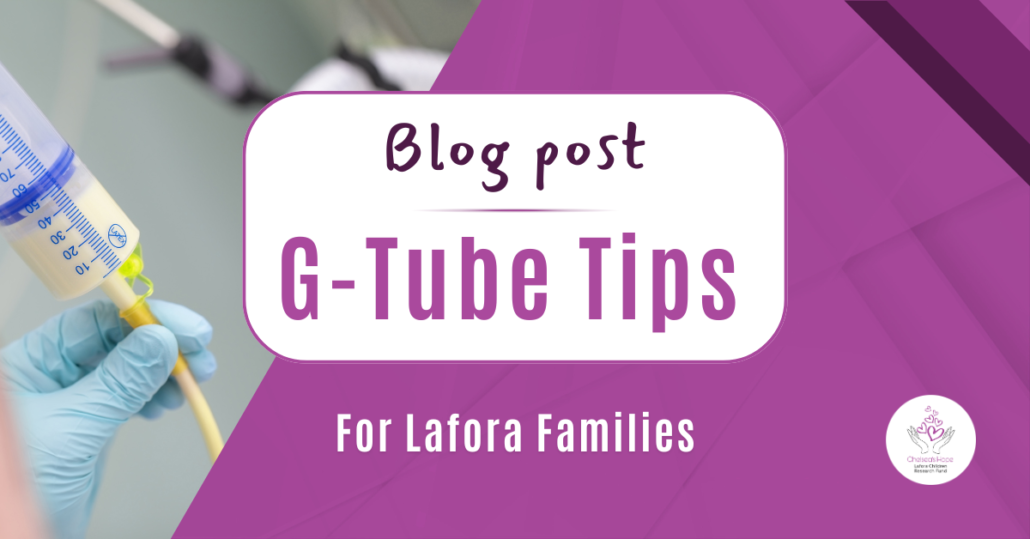G-Tube Tips – A Mother’s Perspective

A Mother’s Perspective on the Benefits of a Feeding Tube for Lafora Disease Patients
Has your child got a Gastrostomy tube, or have you been advised they will need it?
It is a very daunting decision to make as you are still grieving from the devastating diagnosis and watching your child change so rapidly. Take the time to research gastronomy tubes (g-tube) and decide when you feel ready. It is another big change for you, the family, and especially your child. Here are a few recommendations I’d like to share to help make this decision and to make it easier if and where possible.
The benefits of getting a gastrostomy tube inserted early can be helpful as your child is less at risk when their Lafora symptoms are less severe. Having the g-tube early will save on trips to the hospital if there are emergencies where you need to administer emergency medications. You can save the stress by helping your child in the comfort of your own home. You can also give additional nutrition if they are not adequately meeting their dietary requirements. A g-tube will help keep them strong for a lot longer, especially if you can provide them with nutrition that they necessarily wouldn’t eat if you asked them to.
Tips for caring for your child with a gastrostomy tube:
- A low-fiber formula for nutrition is ideal, as a formula with high fiber is hard for a slow gut to process. A high-fiber formula could cause more frequent constipation and vomiting issues as their bodies cannot break down the fiber quickly enough. A high protein feed with a good water intake is helpful.
- Stool softeners can alleviate any adverse effects, like constipation and vomiting.
- If lying down, elevate their head to a 30–45-degree elevation to avoid aspiration into their lungs.
- If you can administer the formula slowly or intermittently, then this will help them absorb it and avoid overfill, which can cause vomiting.
- Overnight feeds can help if they get upset with having to be fed this way and put less stress on the body to work quickly.
- Venting/Degassing is good if they are having painful gas issues.
More information on g-tubes
Our Resources page has links to helpful tips. More information on ways to care for your child with a gastrostomy tube can also be found here. You can also join the TubeFed community on Facebook. Finally, check out these resources I’ve found helpful.
My recommendations are from my own experience with my daughter and shared from a mother’s/carer’s point of view. Please discuss everything with your healthcare team and follow any medical practitioner’s advice when given.
Sending Love
Niki
Parent and Director of Family Support











